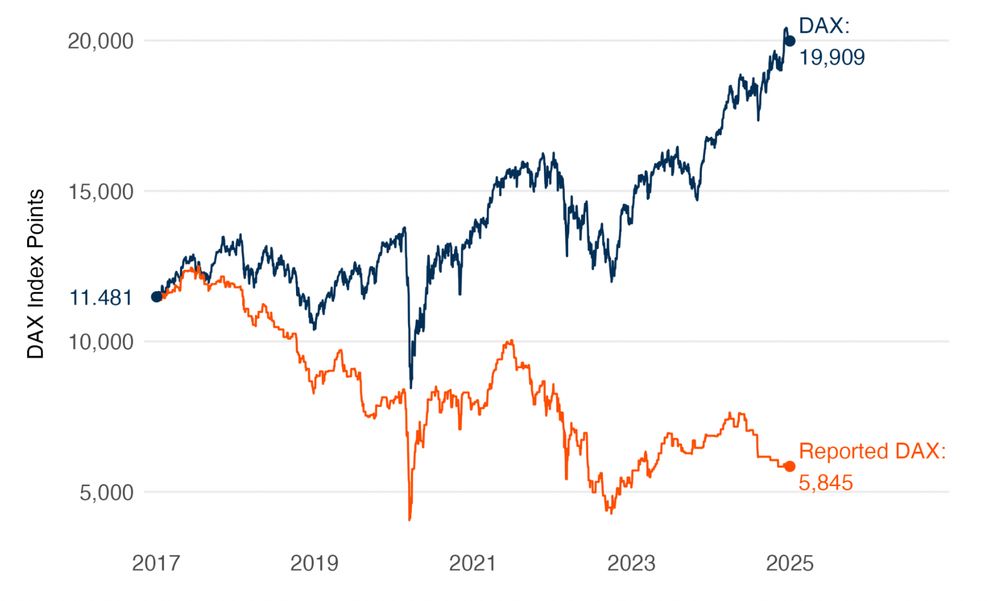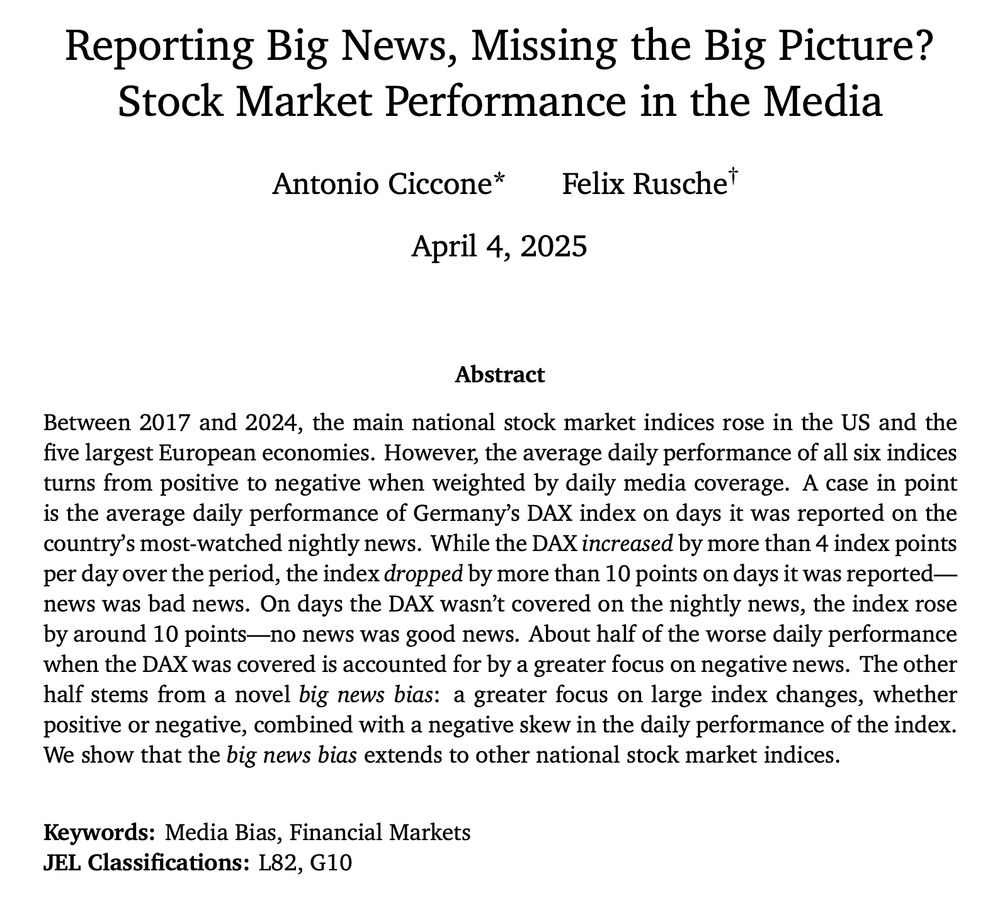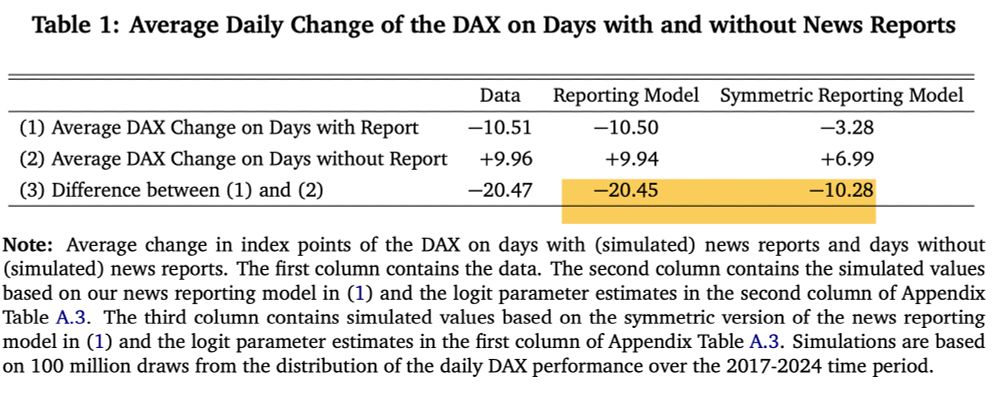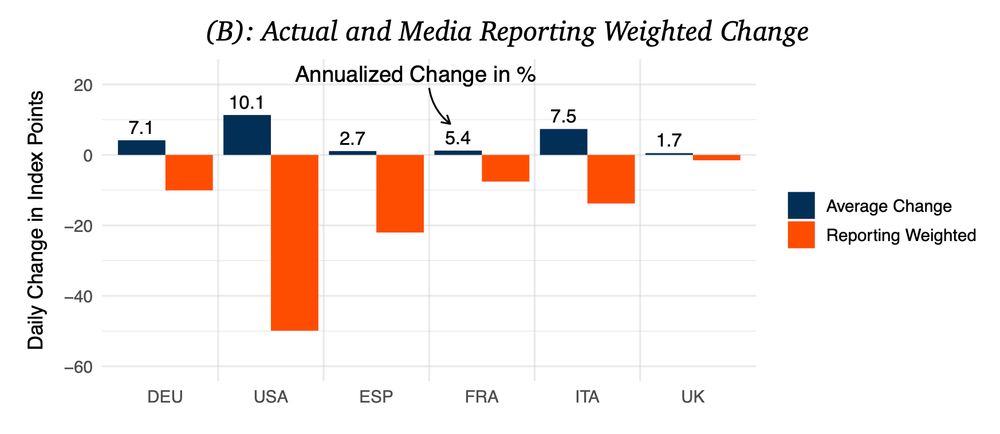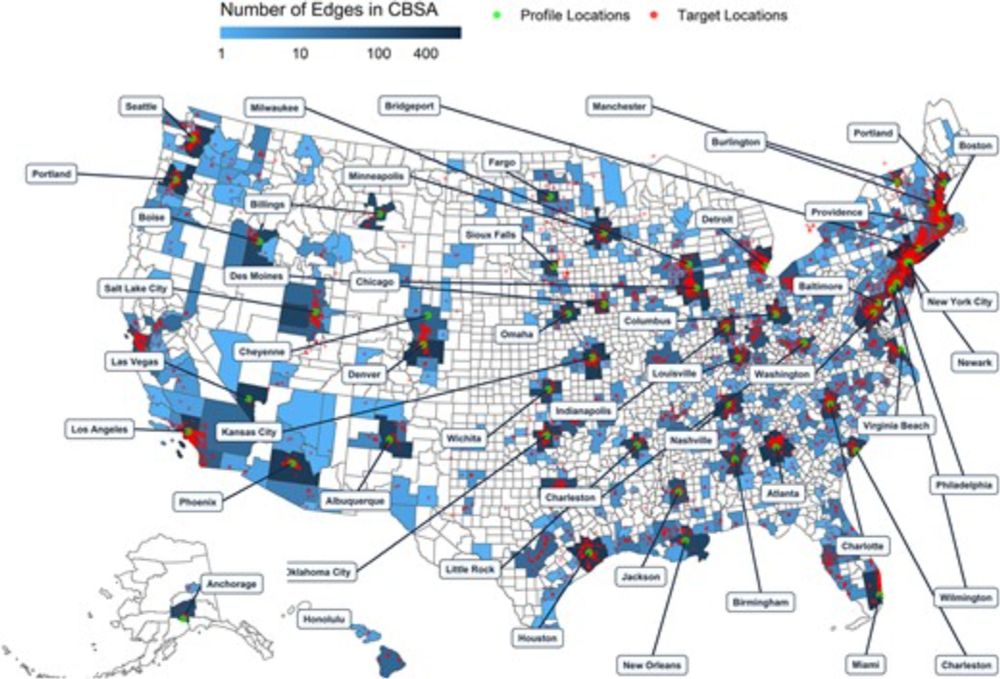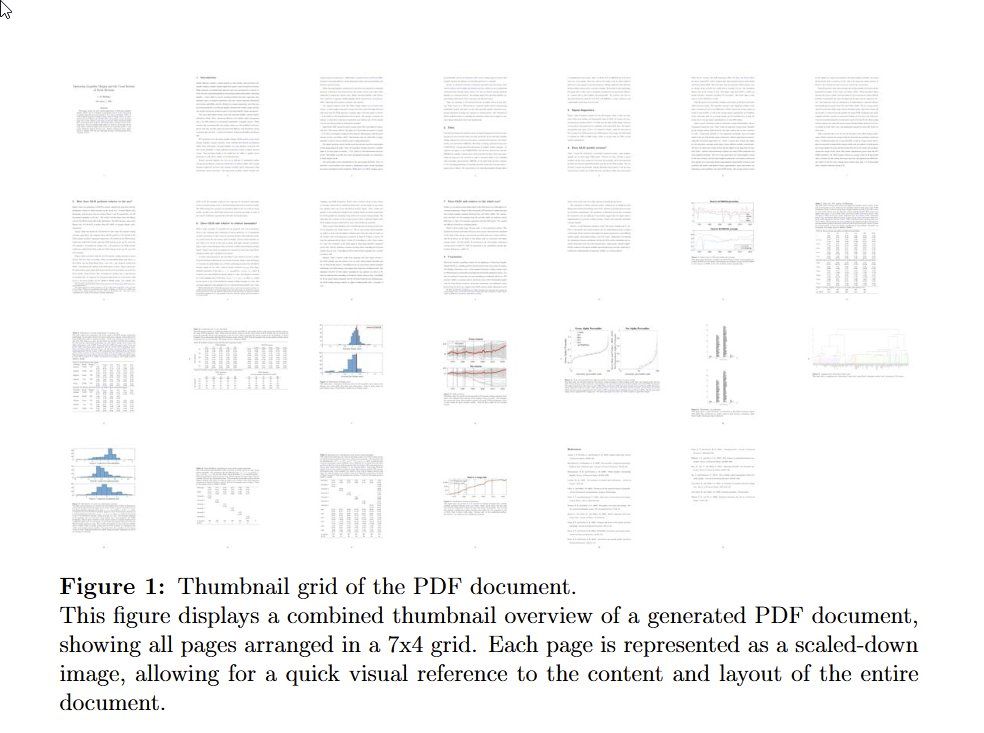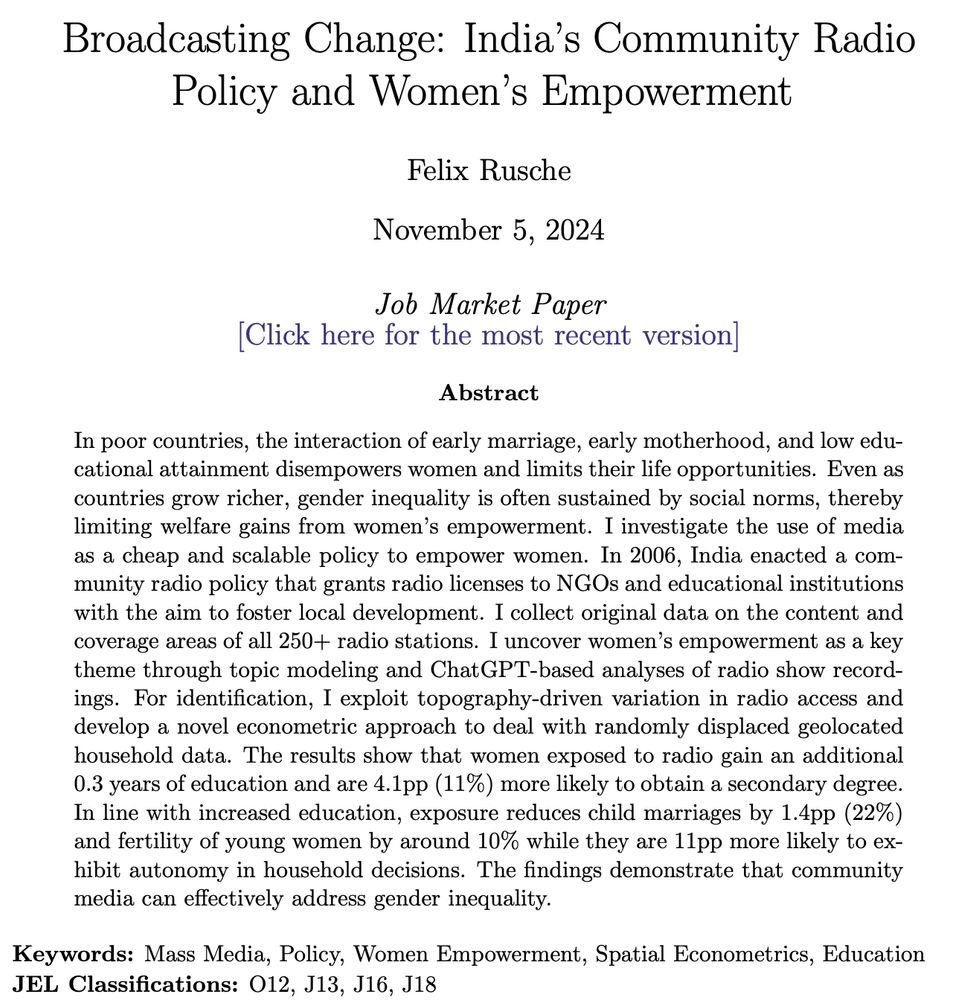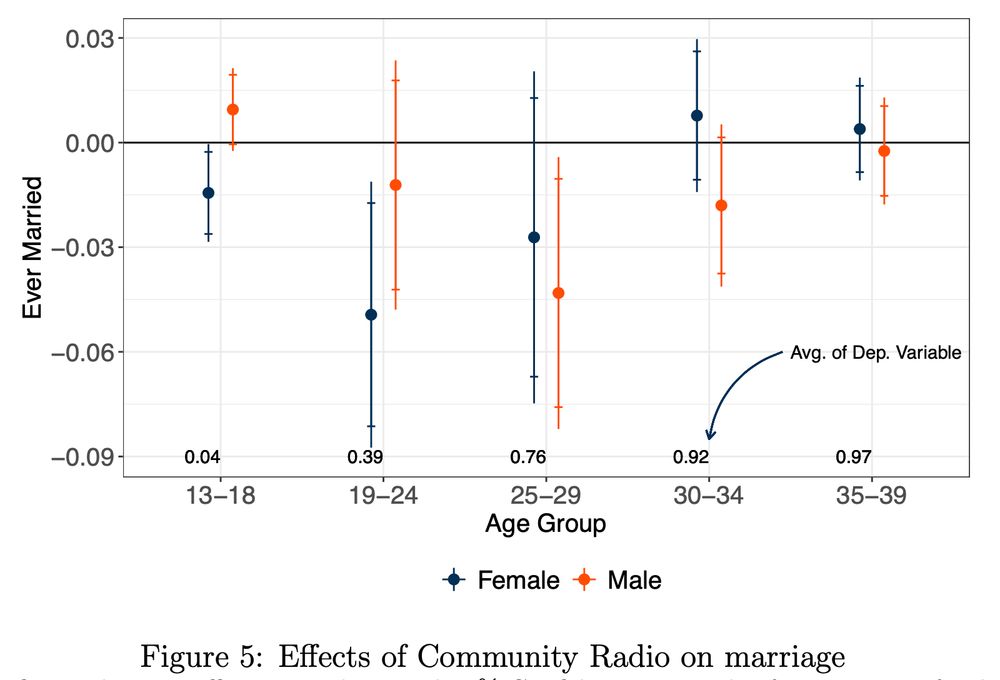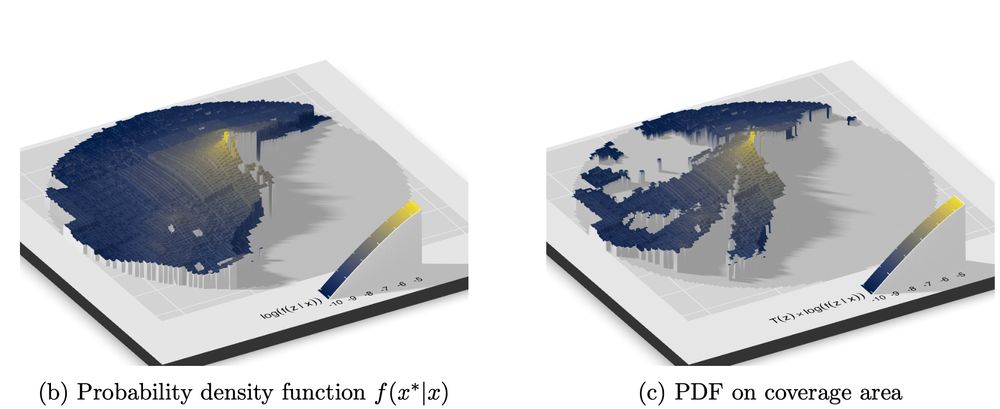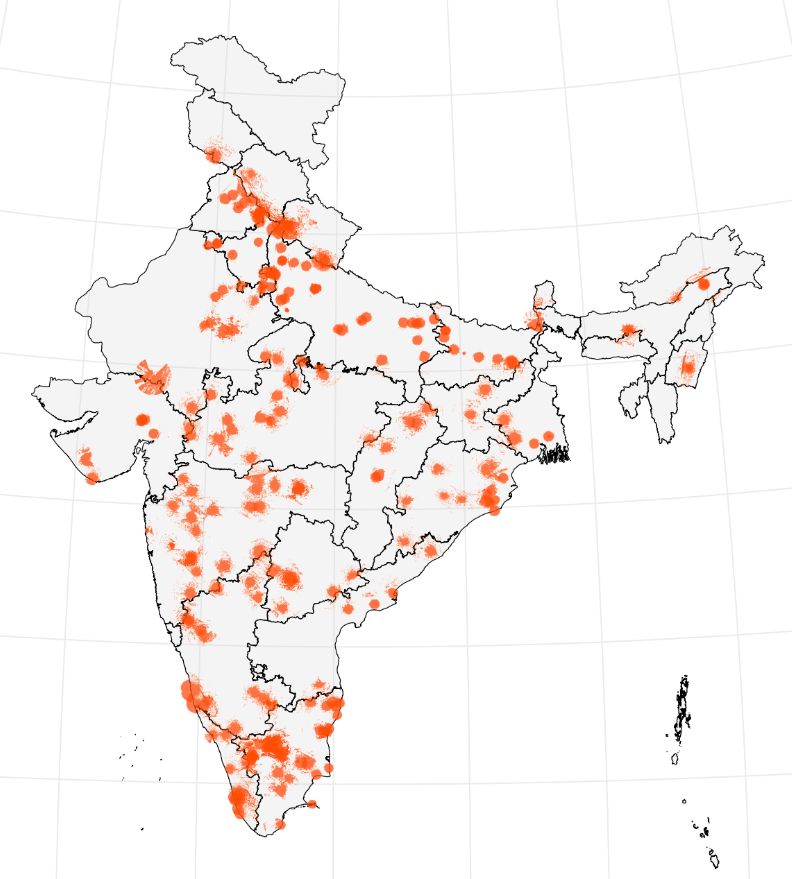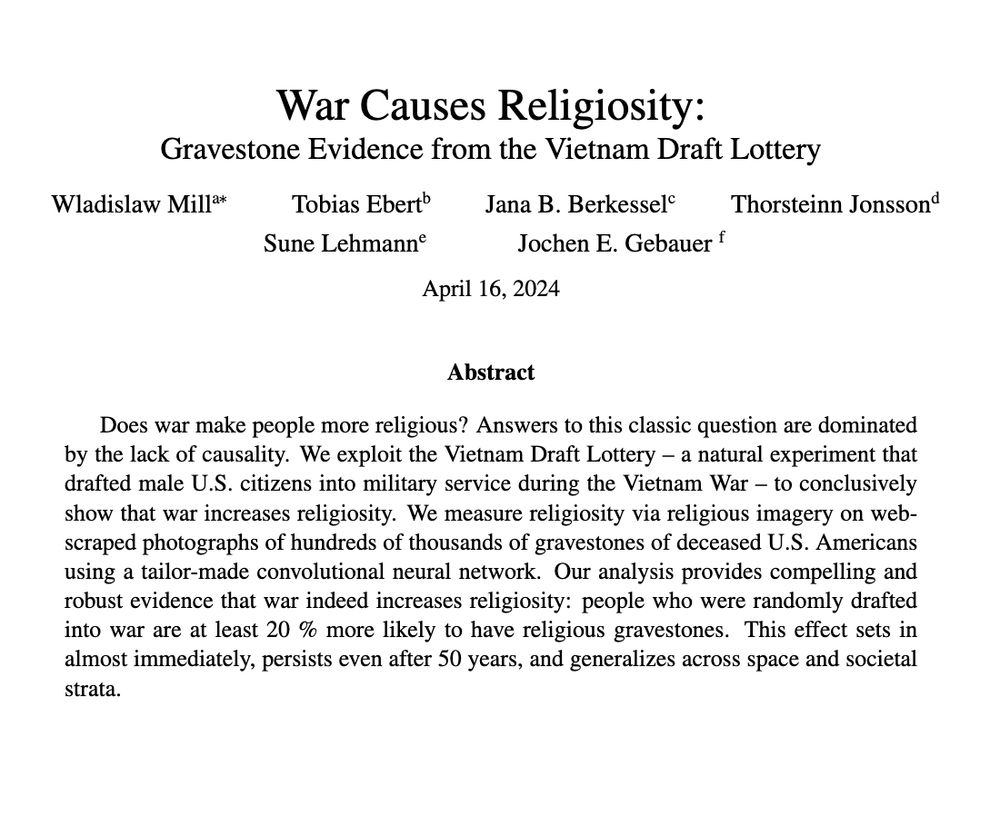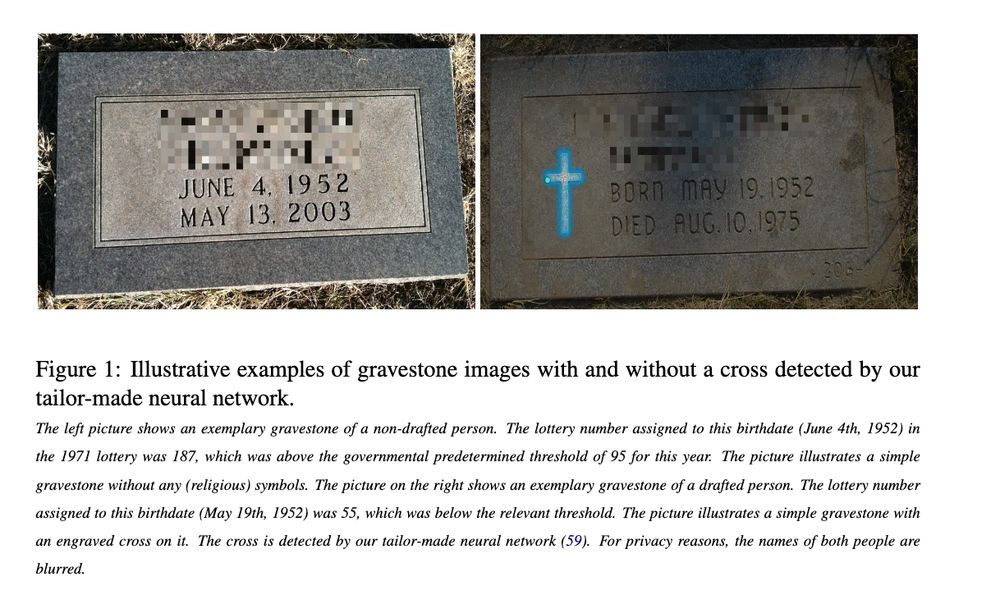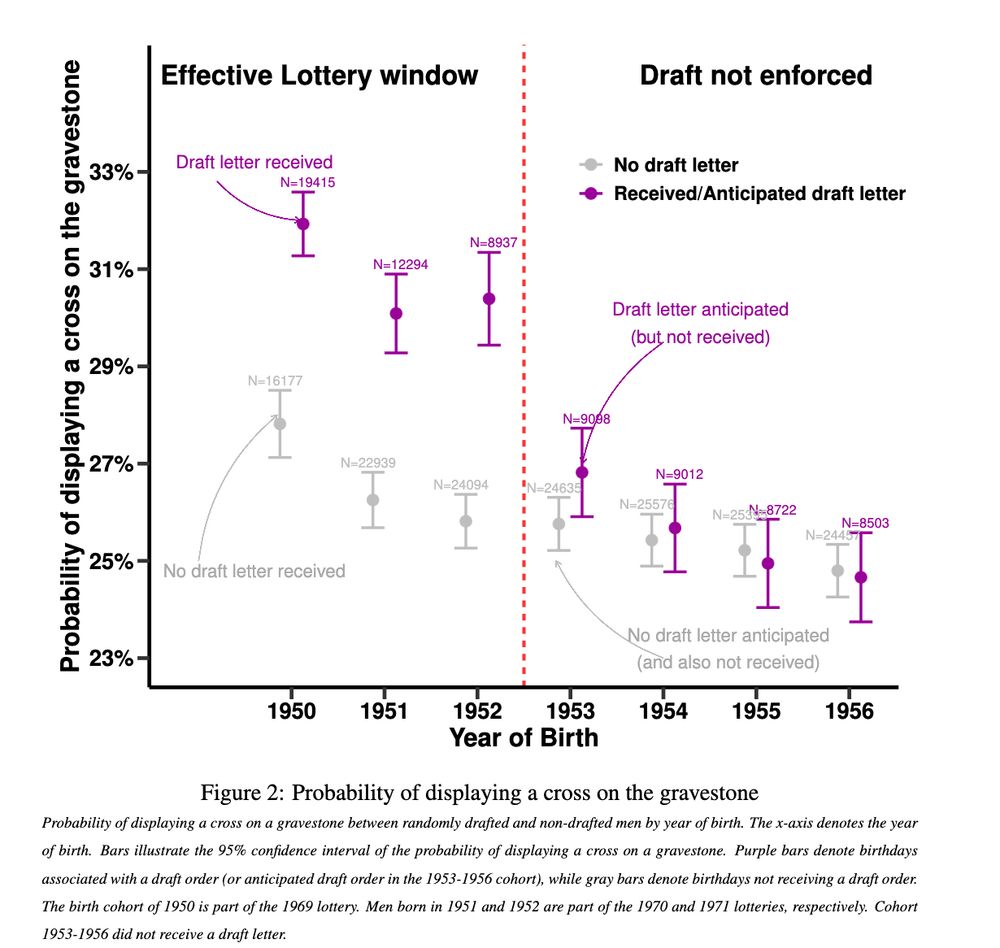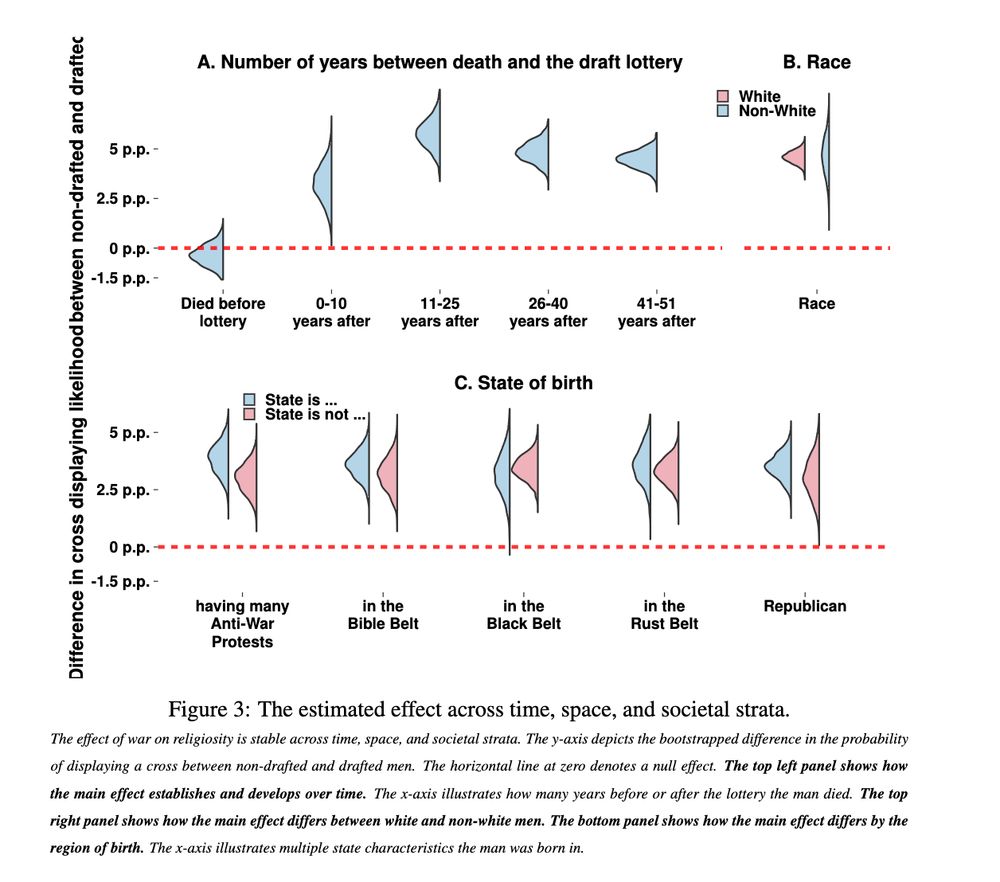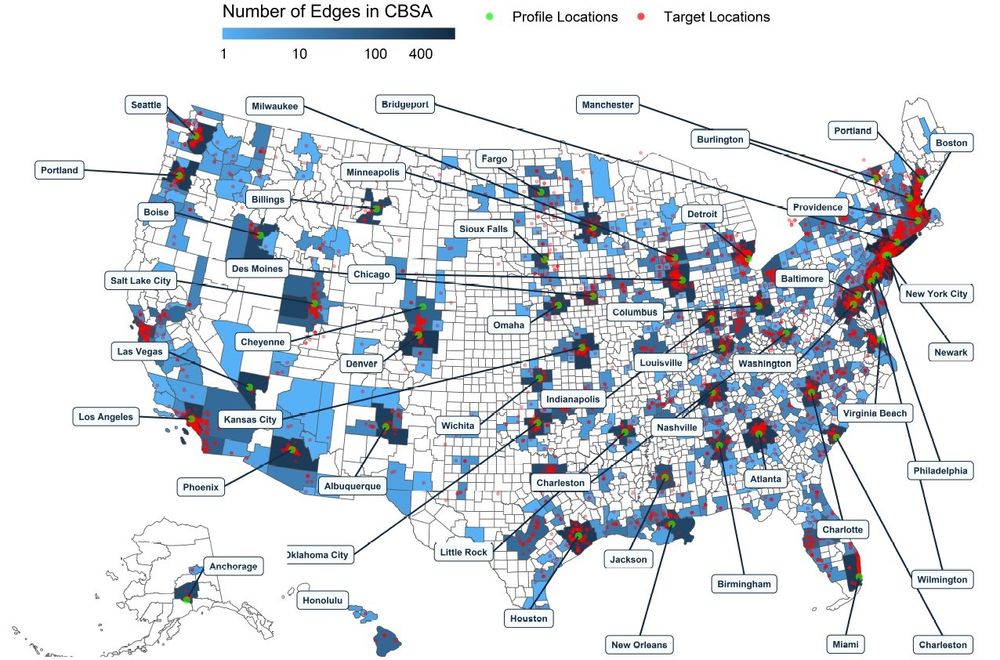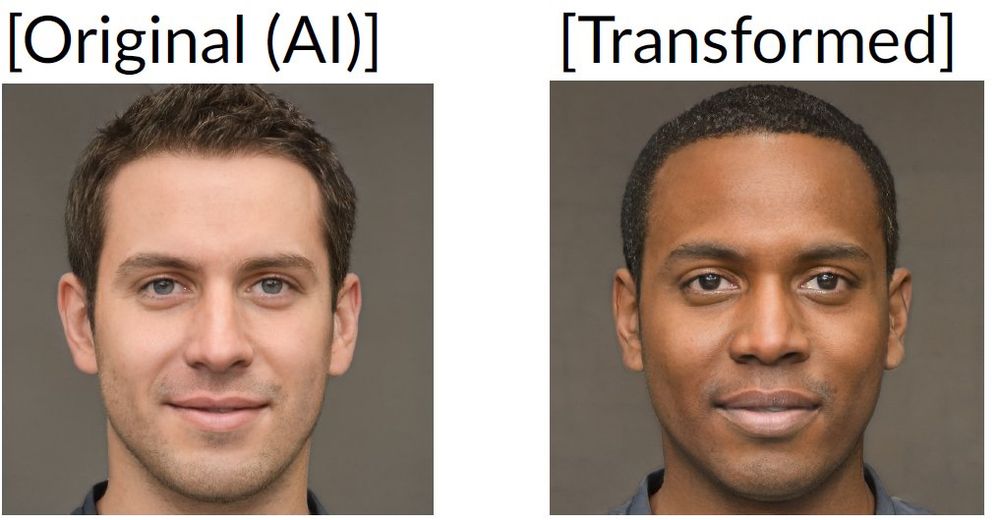Felix Rusche
PhD Candidate in Economics at Uni Mannheim | Labor, Development, Political Economy | felixrusche.github.io
- Do the media focus on the negative? If so, why? We study this in the context of stock market reporting and identify and quantify an overlooked bias. A thread:
-
View full threadIf progress is characterised by many small, incremental improvements with few yet larger setbacks, news reporting will focus on the latter. We also generalise these findings to other indices.
- Please find the paper and short summaries on my website: felixrusche.github.io We are happy about any feedback.
- We decompose this 20-point difference by simulating news reporting with and without negative reporting bias. We find that even when muting the negative reporting bias half of the gap remains.
- The remaining half is explained by a focus on large events in combination with negative skewness in daily changes. As such, we quantify what Rosling et al., @hannahritchie.bsky.social, and @ourworldindata.org have argued for in the past:
- A case in point is Germany’s most-watched nightly news – the ZDF heute Journal. The nightly news include a 1:30 min segment reporting economic and financial news from the stock market in Frankfurt.
- ZDF journalists mention daily changes in Germany’s DAX on 29% of days. While the DAX increased by a daily avg. of 4 index points from 2017-24, it fell by 10 points when mentioned on the news and increased by 10 points when not mentioned. Adding this up results in the above figure.
- To motivate: From 2017 to 2024, the main national stock market indices rose in the US and the five largest European economies. Yet, the average daily performance of all six indices turns from positive to negative when weighted by coverage of the countries’ ten most-read outlets.
- More high-quality evidence that the world is not blind to race... absent intervention, there is not equality of opportunity. academic.oup.com/qje/article-...
- [Not loaded yet]
- [Not loaded yet]
- This is massive
- Wow.. this is concerning.
- [Not loaded yet]
- Thank you so much, Wlada!
-
View full threadFinally, I compare my methodological innovation to the naive approach of relying on jittered coordinates. In line with solving the issue of attenuation bias, using my method increases point estimates by more than 50% on average.
- Overall, the results are in line with a media-induced change in gender norms and highlight the potential of grassroots media as a policy instrument to affect the role of women.
- I find strong effects of community radio on women's empowerment. Exposure to community radio 📚 Increases affected women’s education by 0.3 years 👰🏽♀️ Reduces child marriage by 22% 👶🏽 Lowers young women’s fertility by ~10%. 💪🏽 Boosts women’s autonomy in household decisions by 11pp
- Not least, I find no evidence of a male backlash. Rather, men report higher agreement with women's participation in household decisions, suggesting changes in their attitudes as well.
- In addition, I solve an important issue of the underlying household survey data: To preserve respondents’ privacy, coordinates of survey locations are randomly displaced prior to being made available to researchers. This introduces substantial bias.
- I build on the displacement algorithm and external data to compute the PDF of original locations, conditional on observing a displaced location. I then compute the probability mass on the coverage area. This allows for clean identification of parameters despite the displacement.
- I show that education and women's empowerment are key themes in radio programming. Using ChatGPT, I further show that radios argue against child marriage, in favour of girls' education, etc.
- I then compute coverage areas and match these with DHS survey data. For identification, I exploit topographic features between radio towers and receivers, a standard approach in the literature.
- By 2020 more than 250 radio stations launched, covering a population of >300mln individuals.
- Given radio stations' editorial freedom, I first analyse which issues these choose to focus on. For this, I transcribe, translate, and analyse thousands of radio show recordings.
- Link to my website and paper: felixrusche.github.io
- To study this, I investigate India's 2006 community radio policy, which grants NGOs and educational institutions the opportunity to set up a community radio station with the specific aim to focus on local development.
- Making a Starter Pack for Econ and Econ-Adjacent PhD students. DM or comment to be added! go.bsky.app/QnmW5VPat://did:plc:vuxmclzb6uel2hdec745iura/app.bsky.graph.starterpack/3lapjebigwz2o
- 🙌
- I started a starter pack of economists working on gender. It's sparsely populated, so please point out people I've missed. go.bsky.app/P6kvUEeat://did:plc:orfjnv4sxvbl3jzxq6i6cthl/app.bsky.graph.starterpack/3lamxgkf64q26
- 🙌
- [Not loaded yet]
- Super Liste, danke!
- Anyone aware of a precise dataset of the urban/rural definition in India’s 2011 population census? I only found this one at 1km resolution: sedac.ciesin.columbia.edu/data/set/ind... #econsky #devdatalab
- Want to use large language models in your research? I wrote a short introduction to using ChatGPT and Llama in #R paulcbauer.github.io/apis_for_soc...
- Does war cause people to become more religious? @econmill.bsky.social and coauthors show that it does using a novel method that combines the Vietnam lottery with gravestone images
- Hey you! Check out this cool new paper. "War Causes Religiosity" The authors scraped web images of hundreds of thousands of gravestones of deceased U.S. Americans. People who were randomly drafted into war are at least 20% more likely to have religious gravestones osf.io/preprints/so...
- Ever wondered how discrimination affects job networks? In our two-stage experiment on LinkedIn, we provide insights into the question, causally studying the effect of discrimination on Black individuals' job networks in the U.S.
- [Not loaded yet]
- [Not loaded yet]
- This suggests that gatekeeping is the primary driver of Black-White disparities: once Black and White individuals have access to the same networks, they are exposed to the same amount of valuable information.
- [Not loaded yet]
- In the second stage, our profiles ask their networks for job-related information or carrier advice via a direct message. The response rate is 21%. Most replies provide valuable information, like details about the company’s application process and even referrals.
- [Not loaded yet]
- Half of the profiles represent Black and half White male users. We signal race exclusively through AI-generated profile pictures, while keeping first and last names racially neutral. The profiles were otherwise comparable in other characteristics.
- [Not loaded yet]
- [Not loaded yet]
- Thank you very much!

